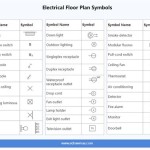Easy Houseplants Safe for Pets
Bringing the outdoors in can brighten any living space. However, pet owners must exercise caution when selecting houseplants. Many common varieties pose a toxicity risk to cats and dogs. Fortunately, several attractive and easy-to-care-for options exist that are safe for cohabitation with furry friends.
Spider Plant (Chlorophytum comosum): A classic choice for beginners, the spider plant is known for its air-purifying qualities and cascading foliage. These plants produce "spiderettes," or small offshoots, which dangle from the mother plant and can be easily propagated. While not technically toxic, the mild hallucinogenic properties in spider plants can sometimes cause cats to experience mild gastrointestinal upset or vomiting if ingested in large quantities. Providing alternative sources of stimulation, such as catnip, can often deter feline interest.
Prayer Plant (Maranta leuconeura): Prayer plants are prized for their striking leaf patterns and unique leaf movements. Their leaves fold upwards at night, resembling praying hands, and then unfurl again during the day. These plants thrive in bright, indirect light and humid environments.
Calathea (Calathea spp.): Close relatives of prayer plants, Calatheas also offer a variety of intriguing leaf patterns and colors. Often referred to as "living prayer plants," their leaves move throughout the day in response to light changes. These plants require similar care to prayer plants and are equally safe for pets.
Peperomia (Peperomia spp.): With a wide range of shapes, sizes, and colors, Peperomia offers something for everyone. These compact plants are known for their fleshy leaves and tolerance for slightly drier conditions. They are generally low-maintenance and thrive in bright, indirect light.
African Violet (Saintpaulia ionantha): Beloved for their delicate, velvety blooms, African violets are a charming addition to any home. These plants prefer bright, indirect light and consistently moist soil. They are readily available in a variety of colors and are considered non-toxic to pets.
Swedish Ivy (Plectranthus verticillatus): A vigorous trailing plant, Swedish ivy is a forgiving option for beginners. Its rounded, scalloped leaves and cascading habit make it an ideal choice for hanging baskets. This plant thrives in bright, indirect light and prefers evenly moist soil.
Boston Fern (Nephrolepis exaltata): These lush, air-purifying ferns add a touch of classic elegance to any space. Boston ferns prefer bright, indirect light and consistently moist soil. They also benefit from regular misting to maintain humidity. Misting helps prevent the tips of the fronds from turning brown.
Pilea involucrata (Friendship Plant): The friendship plant, true to its name, readily produces offshoots that can be shared with friends. Its textured, reddish-bronze leaves add an interesting dimension to any plant collection. This plant prefers bright, indirect light and well-draining soil.
Orchids (Orchidaceae spp.): While the vast orchid family encompasses a wide variety of species, many common varieties, such as Phalaenopsis (Moth Orchids), are considered non-toxic to pets. Orchids are often perceived as challenging, but with proper care, they can thrive and produce stunning blooms. They require bright, indirect light and specific watering techniques to prevent root rot.
Ponytail Palm (Beaucarnea recurvata): Despite its common name, the ponytail palm isn’t a true palm but a succulent. It features a bulbous base that stores water, making it drought-tolerant. Its long, strappy leaves resemble a ponytail, giving it its distinctive name.
When introducing any new plant into a home with pets, gradual acclimation is recommended. Place the plant in a supervised area initially to observe the pet’s reaction. While these plants are considered non-toxic, ingestion of large quantities of any plant material can potentially cause gastrointestinal upset in some animals. Providing alternative sources of stimulation, such as pet-safe toys, can often redirect a pet's attention away from houseplants.
Proper plant care is crucial for maintaining healthy growth and minimizing the risk of problems. Researching the specific needs of each plant species will ensure optimal conditions. Factors such as light requirements, watering frequency, and humidity levels play a significant role in plant health.
Selecting pet-safe plants not only enhances the aesthetics of a living space but also provides peace of mind for pet owners. These plants offer a beautiful and safe way to enjoy the benefits of indoor greenery without compromising the well-being of beloved companions.

21 Indoor Plants Safe For Cats And Dogs Paisley House Cat Pet Friendly
12 Low Maintenance Houseplants Safe For Cats And Dogs Swift Wellness

17 Beautiful Houseplants Safe For Cats With Pictures Smart Garden Guide

15 Pet Friendly Indoor Houseplants Safe For Cats And Dogs
12 Low Maintenance Houseplants Safe For Cats And Dogs Swift Wellness

11 Pet Friendly Houseplants The Woodlands Township Environmental Services

15 Pet Friendly Indoor Houseplants Safe For Cats And Dogs

15 Non Toxic Houseplants That Are Safe For Kids Pets Ted Lare Design Build

The Best Pet Friendly Houseplants Emilie Eats

Pet Friendly And Not So Plants
Related Posts








